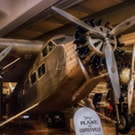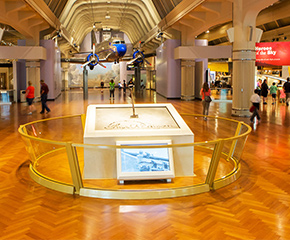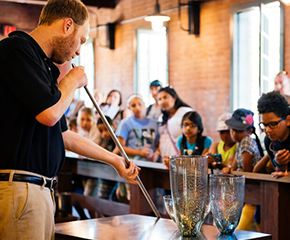Radio Goniometer Used at Ford Airport, circa 1927
Add to SetSummary
The radio beacon may be Henry Ford's most important contribution to aviation. Early pilots depended on landmarks, preventing reliable navigation in bad weather. Ford's engineers developed a radio beacon that simultaneously transmitted the Morse code letter "A" (dot-dash) in one direction and the letter "N" (dash-dot) in another. The pilot steered until the separate signals merged into a steady hum.
The radio beacon may be Henry Ford's most important contribution to aviation. Early pilots depended on landmarks, preventing reliable navigation in bad weather. Ford's engineers developed a radio beacon that simultaneously transmitted the Morse code letter "A" (dot-dash) in one direction and the letter "N" (dash-dot) in another. The pilot steered until the separate signals merged into a steady hum.
Artifact
Goniometer
Date Made
circa 1927
Place of Creation

On Exhibit
at Henry Ford Museum in Heroes of the Sky
Object ID
36.760.1
Credit
From the Collections of The Henry Ford.
Material
Metal
Wood (Plant material)
Dimensions
Height: 59.5 in
Width: 26.5 in





